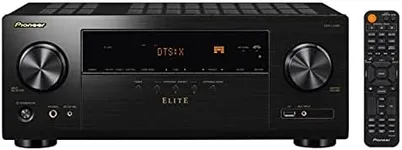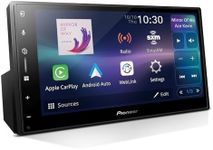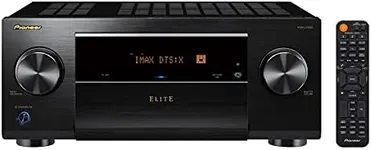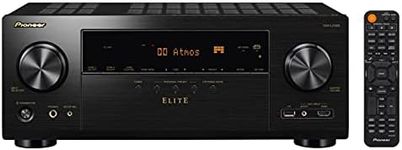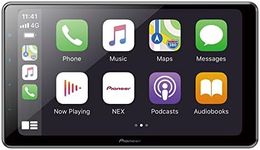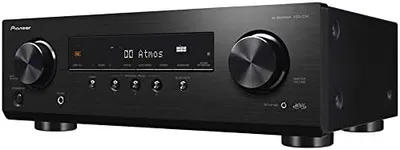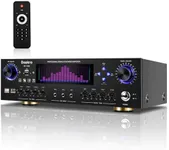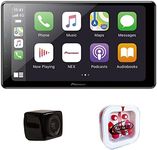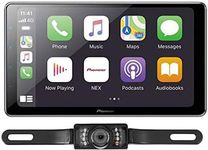Buying Guide for the Best Pioneer Av Receivers
Choosing the right AV receiver can significantly enhance your home entertainment experience. An AV receiver acts as the hub for your home theater system, connecting and managing all your audio and video components. When selecting an AV receiver, it's important to consider your specific needs and preferences, such as the size of your room, the types of devices you plan to connect, and the quality of sound and video you desire. Here are some key specifications to consider when choosing a Pioneer AV receiver.Power OutputPower output, measured in watts per channel, indicates how much power the receiver can deliver to your speakers. This spec is important because it affects the volume and clarity of the sound. Generally, higher wattage means more powerful sound, but it's essential to match the power output to your speakers' capabilities and the size of your room. For small to medium-sized rooms, 50-100 watts per channel is usually sufficient, while larger rooms may benefit from 100-200 watts per channel.
Number of ChannelsThe number of channels refers to how many speakers the receiver can support. Common configurations include 5.1, 7.1, and 9.2 channels. A 5.1 system includes five speakers and one subwoofer, suitable for most home theaters. A 7.1 system adds two additional speakers for enhanced surround sound, ideal for larger rooms or more immersive experiences. A 9.2 system includes nine speakers and two subwoofers, providing the most comprehensive sound coverage. Choose the number of channels based on your room size and desired audio experience.
Connectivity OptionsConnectivity options determine how many and what types of devices you can connect to the receiver. Look for HDMI inputs and outputs, as they are essential for connecting modern TVs, gaming consoles, and Blu-ray players. Additional options like USB ports, Bluetooth, and Wi-Fi allow for streaming music and connecting mobile devices. Ensure the receiver has enough inputs to accommodate all your devices and consider future expansion.
Audio FormatsSupport for various audio formats ensures compatibility with different types of media. Common formats include Dolby Digital, DTS, and Dolby Atmos. Dolby Digital and DTS provide high-quality surround sound, while Dolby Atmos offers an immersive 3D audio experience. If you want the latest and most immersive sound, look for receivers that support Dolby Atmos. Consider the types of media you consume and choose a receiver that supports the necessary audio formats.
Video ProcessingVideo processing capabilities affect the quality of the video signal passed through the receiver. Features like 4K pass-through, HDR (High Dynamic Range), and upscaling enhance the video quality. 4K pass-through ensures compatibility with 4K TVs and content, while HDR provides better contrast and color accuracy. Upscaling improves the quality of lower-resolution content. If you have a 4K TV or plan to upgrade, ensure the receiver supports these features for the best viewing experience.
Room CalibrationRoom calibration technology automatically adjusts the receiver's settings based on your room's acoustics. This feature is important because it optimizes sound quality for your specific environment, ensuring balanced and clear audio. Look for receivers with built-in calibration systems like MCACC (Multi-Channel Acoustic Calibration) for Pioneer models. This feature is particularly useful if your room has unique acoustics or if you want the best possible sound without manual adjustments.
